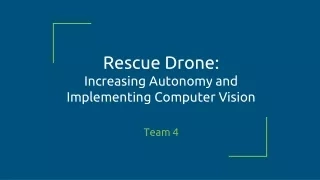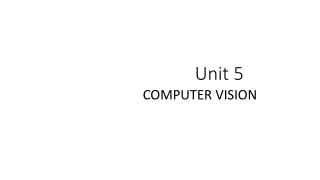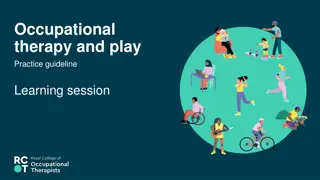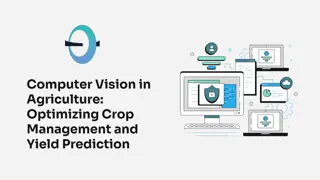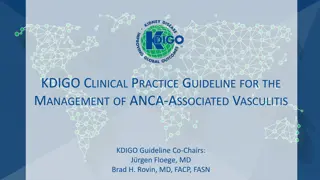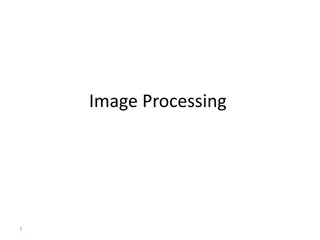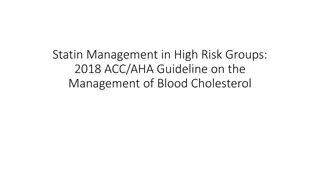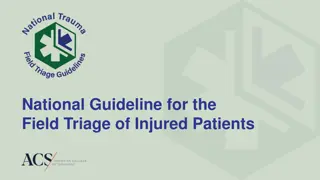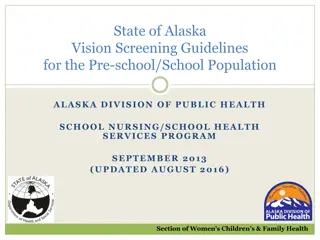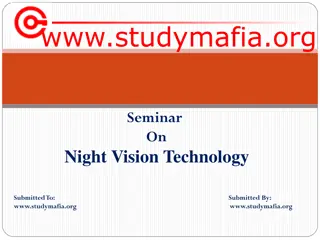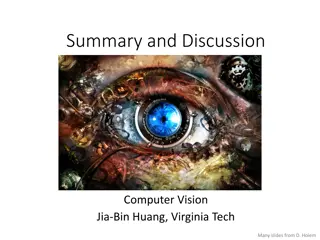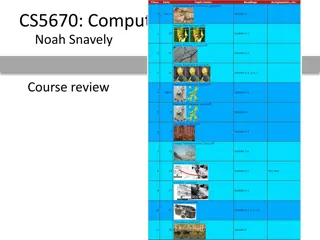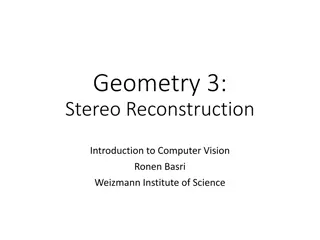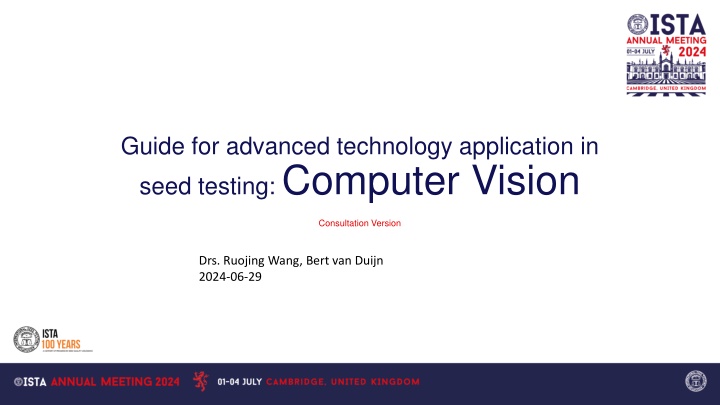
Applying AI in Seed Testing: Computer Vision Consultation Guide
This guide focuses on applying advanced technology, specifically Computer Vision (AI), in seed testing. It addresses the lack of practical guidance for technology developers and end users by providing a structured approach to tool evaluation, verification, and quality control. The objectives include developing an operational guide for AI tools in seed testing, verifying end-user labs, and promoting the swift adoption of Computer Vision. Milestones for consultation, revision, and finalization are outlined, with a projected completion date in 2024. The guide covers key components of AI in seed testing, such as imaging equipment, AI modeling, system output, performance monitoring, and quality control records.
Download Presentation

Please find below an Image/Link to download the presentation.
The content on the website is provided AS IS for your information and personal use only. It may not be sold, licensed, or shared on other websites without obtaining consent from the author. If you encounter any issues during the download, it is possible that the publisher has removed the file from their server.
You are allowed to download the files provided on this website for personal or commercial use, subject to the condition that they are used lawfully. All files are the property of their respective owners.
The content on the website is provided AS IS for your information and personal use only. It may not be sold, licensed, or shared on other websites without obtaining consent from the author.
E N D
Presentation Transcript
Guide for advanced technology application in seed testing: Computer Vision Consultation Version Drs. Ruojing Wang, Bert van Duijn 2024-06-29
Background: the needs Advanced technology applications are in demand to be recognized in seed testing. Lack of practical guidance for technology developers and end users. Require acceptable standards or processes for tool evaluation.
Background: a working group ISTA Technical committees: (ATC, PUR, GER, VIG) ISTA formed a working group 2023 Consultation groups: STA, PT, and ISTA Accreditation department AOSA-SCST Advanced Technology Committee is the observer
Guide Focus: Computer Vision (AI) AI Components: Imaging equipment AI modeling (Software) System output Tool Scope Performance Monitoring Scope expansion Maintenance Quality control records Zhao, et al., 2022 Seed Science & Technology https://doi.org/10.15258/sst.2022.50.1.s.05
Working Group Objectives Develop an operational guide for applying computer vision (AI tools) (equivalent to humans) in seed testing. Provide verification expectations of end-user labs and support the audit team for the validity of tool outcomes. Specify the minimum quality control expectation Facilitate the speedy or prioritized applications of computer vision (equivalent to human) in seed testing Share common/best practice in computer vision application
Working Group Milestones Outline the Guide Consultation & Revision Finalizing & Publication Oct. 2023 Jan. 2024 May July 2024 Aug. Oct. 2023 Feb. Apr. 2024 Sep. Oct. 2024 Presenting & Consultation Drafting the Guide
Outline of the Guide: Definitions Computer Vision: Computer vision is a field of artificial intelligence (AI) that uses machine (deep) learning and neural networks to teach computers and systems to derive meaningful information from digital images, videos and other visual inputs. The AI powered computer system enables to think, to see, to analyse, and to make recommendations (ibm.com). ibm.com Tool development: In this guide, tool development refers to the process of creating AI software tools or applications that assist in various aspects of software development, testing, and maintenance. Tool development aims to address specific needs and challenges faced by developers through processes such as data collecting, coding, debugging, testing, documentation, and deployment, i.e., research and development stage of an AI application. Tool Verification: Tool Verification is a crucial process used to ensure that a product, service, or system meets specific requirements and specifications, as well as fulfils its intended purpose. It plays a vital role in quality management systems, such as ISTA Accreditation standard
Process Documentation Customized software requires verification to meet required accuracy Overview of tool application scope and performance indicators (Annex 1) Original observations of tool development on performance indicators (Annex 2) (See ISO/IEC 17025:2017, section 7.11.2). Tool performance equivalency verification with single or multiple laboratories (Annex 3)
General Principles of the Guide TOOL OBJECTIVE AND SCOPE INTENDED EQUIPMENT AND METHODS VARIATION OF MATERIALS EXPECTED OUTCOMES MAINTENANCE
Tool Verification* (performace indicator in development) Single lab verification for known value, such as seed identification? Multiple labs for unknown value, such as % values? Standard or peer reviewed data set, e.g., seedling classification?
Illustration on the Process of an AI Tool Development Tool Verification Maintain development and verification records Set up operation and maintenance procedures Monitor and feedback on the performance Set up the system (Hardware) Determine the tool scope Collect data and build computer model (Software) Determine tool performance indicators Determine verification method & design Obtain verification samples or data sets Evaluate performance Decide the acceptance Tool Development Tool Deployment
Standard Forms (Annexes) for Tool Records Annex 1: Overview of tool application scope and performance indicators *Notes: the grey text are hypothetical examples Category Description Notes Name of the tool: Develop standard format for documentation for: Tool scope and performance QA requirement Laboratory Name: Scope of the tool: e.g., Digital RGB computer vision system for OSD in barley OSD species: Brassica spp. Cuscuta spp. Datura stramonium Sample taxon names e.g., Hordeum vulgare L. subsp. vulgare Tests e.g., OSD Additional specifications, please specify: e.g., sample percentage purity range: >95% Performance indicators: Accuracy: e.g., accuracy % >90% Accuracy verified with ISTA PT sample Others, please specify: e.g., precision Releasing/deployment date: Tool Modification, if any Modification Date: Scope changed: Performance indicator, if any changes e.g., accuracy >95% Operational Procedures SOP ID # Responsible Person for Tool Operational Maintenance requirement e.g., specified in SOP 123 Other notes:
Next steps Refine statistical or methodology for the verification of AI tool Consult other technical committees and members, especially pilot users Revise and publish the first version of the guide Draft the best practices for particular applications, e.g., germ, OSD, vigor, for a second version in 2025
Questions and Discussion Do you see the value of the Guide for facilitating advanced technology to be applied in seed testing? Other comments or questions? Any further comments please contact: Relavent TCOMs: https://www.seedtest.org/en/technical-committees.html Bert van Duijn bert.vanduijn@fytagoras.com Ruojing Wang ruojing.wang@inspection.gc.ca
Thank you I have no actual or potential conflict of interest in relation to this presentation. I have the following conflict/s of interest to declare: Ruojing Wang, and Bert van Duijn

